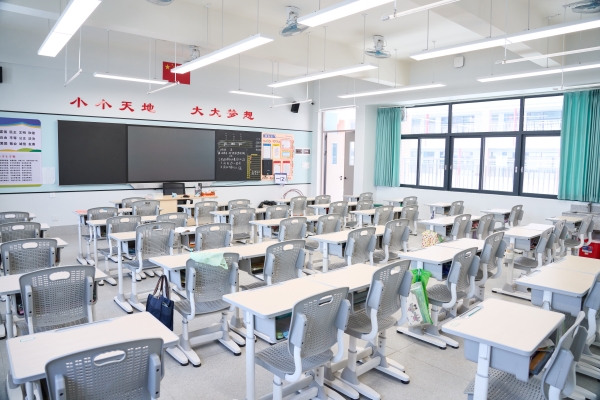During school construction and renovation, school desks and chairs are among the most fundamental and crucial pieces of furniture. They not only impact students' learning experience but also directly impact the overall quality of teaching on campus. However, many schools and educational institutions face a real challenge when purchasing school furniture: limited budgets. So, how can you choose cost-effective school desks and chairs that ensure quality while minimizing costs within a limited budget?
1. Clearly define your purchasing objectives: prioritize quality over appearance.
When purchasing educational furniture, many managers often fall into the trap of overly focusing on design. In reality, for students, practicality, durability, and safety are paramount considerations.
Safety: School desks and chairs should avoid sharp edges and be made of environmentally friendly materials, ensuring they are odor-free and free of harmful substances.
Stability: School desks and chairs must withstand prolonged use and frequent movement, so a solid structure is far more important than a fancy design.
Comfort: Ergonomically designed backrests and tabletop heights reduce strain on students' spines and eyesight, improving their focus.
Therefore, within a limited budget, schools are advised to prioritize student desks and chairs that meet national standards, rather than simply pursuing a novel appearance.

2. Material Selection for School Desks and Chairs
Steel-wood construction is currently the most cost-effective option. The combination of steel legs and frames with a wooden tabletop ensures structural stability while providing a comfortable writing experience. High-quality cold-rolled steel should be at least 1.2mm thick, and the surface should be pickled and phosphated, then electrostatically sprayed for rust and wear resistance. Wood should be environmentally friendly, E1-grade or higher, and formaldehyde emissions must meet national standards.
All-plastic desks and chairs have become increasingly popular in recent years. Utilizing one-shot injection molding technology, they feature no sharp corners, are highly safe, and easy to clean. However, be careful to choose virgin materials, as recycled plastics are prone to brittleness and deformation. These products are particularly suitable for kindergartens and lower grades.
Solid wood desks and chairs are environmentally friendly, healthy, and natural, but they are more expensive and sensitive to temperature and humidity, requiring regular maintenance. If choosing solid wood, choose hardwoods such as beech and oak, avoiding pine, which is prone to warping.
3. Purchasing Practice Guide.
Needs assessment is the first step. Determine procurement goals for school desks and chairs based on student age groups, usage scenarios (standard classrooms, laboratories, libraries, etc.), and budget. For elementary school students, focus on safety and height adjustability; for middle school students, consider more durable products; and for university students, balance practicality and aesthetics.
Supplier selection is crucial. Prioritize manufacturers with many years of experience supplying schools, and request references and user feedback.
Sample testing is essential. Before purchasing, request samples from suppliers for actual testing to verify smooth adjustment mechanisms, a stable structure, and adequate edge treatment.
After-sales service and maintenance are important considerations. Understand the product's warranty period and after-sales service coverage, and confirm the supply channels and replacement costs for consumable parts (such as adjustment handles and plastic foot covers).
Navigation
Contact Us
0086 13927706942
0757-86513332
Huangji Road, Jiujiang Nanhai, Foshan, Guangdong, China
Leaving a message. :